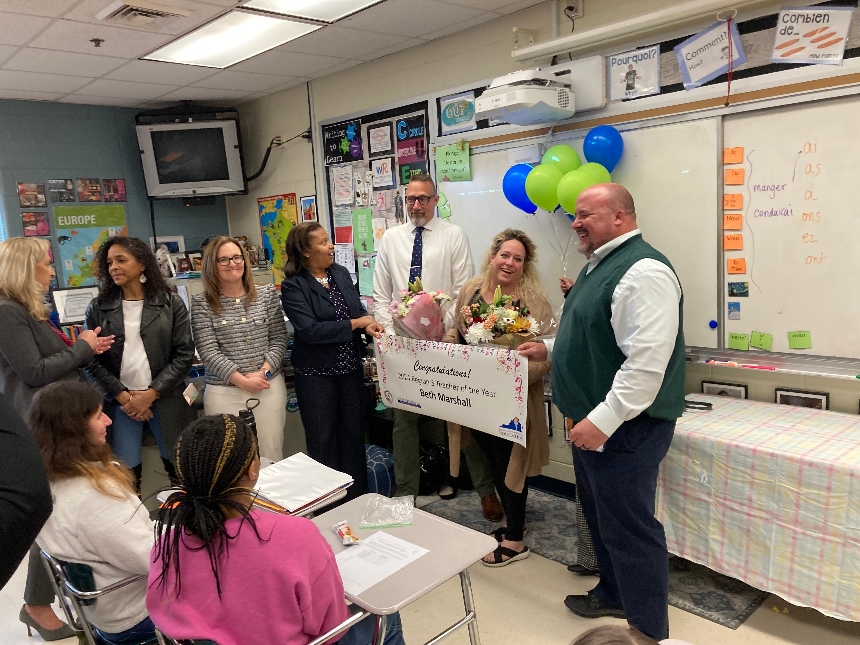
A familiar cycle is about to kick-off again in Virginia.
The final SOL scores are going to be released to the public soon (they were actually due in August). You know what’s going to happen.
Public school critics will cherry-pick whatever numbers that favor them and use the information to further their argument that public schools need to be dismantled and radically rethought.
Gov. Glenn Younkin and his team have previously done this with NAEP scores; its error – or spin – plainly exposed by the Washington Post in May 2022.
What Youngkin’s team got wrong is that the two tests have different meanings of what it means to be “proficient” in a subject, so comparisons aren’t valid. NAEP has long been the subject of criticism over its achievement levels — and for too many years those levels have been equated to grade-level skills. They aren’t.
At Spotsylvania County School Board meetings, a small litany of speakers regularly come before the mic to bemoan SOL scores. The data they often cite demonstrates that they neither understand nor know how to interpret the information they are presenting.
So before the SOL scores are made public in a few weeks, I want to encourage people to ask a different question before the politicians – both those in office and those running for office in our region – and school board members in Spotsylvania and other counties – whose priority is the destruction of public education – begin their diatribes.
What does educational success look like? And how can test data get us there?
No plan, no vision, just punishment
Our collective obsession with data is out of control in the realm of education.
The same critique of the use of data in the humanities (sociology and political science, in particular) applies to education. In a nutshell, it’s this. People present far too many variables for data to ever really capture what’s happening. Or, as social scientist Avery Reyna observed:
The messiness of our human interactions and sociopolitical systems cannot be simply put into datasets to be programmed, scaled, and engineered.
And there may be no one in Virginia to speak more clearly to this than Matt Hurt, director of the Comprehensive Instructional Program out of Wise (CIP).
Over the years, I’ve had many conversations with Hurt about education and the use of data. He is one of the few researchers I’ve found in my long career who is both technically proficient in the use and interpretation of data, and a clear-eyed realist when it comes to the reality of working with children and young adults in the classroom.
We spoke Wednesday evening, after I had been reading through some of the many fascinating research papers that he has sent me over the years. What sparked my call was a paper he had sent to me back in January.
Titled “Virginia’s Educational Objective?,” Hurt raises this point about the lack of any clear direction from the state on what constitutes success in testing.
Speaking about the Board of Education’s need to revise and rework its Comprehensive Plan (a process that is just now beginning), Hurt wrote:
This plan should drive our efforts to improve outcomes for our students, and everything should be aligned to that plan, including accountability measures.
A review of the current Comprehensive Plan yields no stated measurable student outcomes. Given that the output of a public educational system is educated students, desired student outcomes should be the goal. While Appendix A (found on page 17) does list a number of student outcome metrics, nowhere in the document does the Board adopt any such metrics as goals. [Emphasis added]
Virginia is hardly alone in not specifying what success on standardized tests looks like.
Across the country, state standardized tests are used to bludgeon schools as failures, criticize teachers as incompetent, and argue that the whole system needs to be torn down and begun anew. (Too often, with money from state coffers put into the hands of for-profit educational ventures whose first concern is their bottom line, and not necessarily the success of students.)
‘Nothing Fancy or Shiny’
That’s unfortunate, because properly used, testing can be an invaluable tool in measuring learning progress and making schools better.
But better doesn’t come from complaining about falling scores, with no real understanding of why they’re failing; or criticizing rising scores as not rising fast enough, when no one is willing to set a fixed bar of success.
The truth is, even our tests can’t be counted on from year to year to paint an accurate portrait of what educational achievement is or isn’t happening.
“We have no continuity of measure,” says Hurt, “because of changing cut scores, changing standards.”
This hasn’t stopped Hurt and his team from trying to nail down through solid quantitative research what breeds educational success, however.
And they’re making good progress. In fact, Hurt says, “There are some things we have identified that improve education. But it’s nothing fancy, nothing shiny.”
Hurt boils things down to three broad keys to change:
- Relationships. “It’s a huge piece,” says Hurt. “We’re human beings, and we have certain incentive structures in place” that make it unlikely we will respond favorably to people who treat us poorly or don’t believe in us.
- Expectations. “We’ve looked at the relationship between final student grades and SOLs,” Hurt says, and we’ve found a “strong correlation between a student’s final grade and his or her SOL outcome.” But this only is true when teachers bring high expectations into the classroom. When they believe every student can learn, set the bar high, and then grade them on meeting that bar, their SOL scores will follow.
- Administrator Expectations. Hurt says it’s hard to quantify a school that presents a positive learning environment. But when you are in such a school, you know it. Administrators who cultivate such an atmosphere have more success generating academic success.
In short, says Hurt, academic success “boils down to intangibles.”
Testing works against those intangibles.
It puts a straight-jacket on teachers, on administrators, by mandating both the way we teach, and the speed at which it is taught. Now 25 years into the era of standardized testing, we should have figured out it just isn’t working.
Testing can help
If testing is working against the intangibles that make schools successful, however, it’s not because of the test itself. It’s purely how we use them.
When the Commonwealth of Virginia offers no guidance, no guidelines, no benchmarks that define academic success, by default the test become punitive.
If the governor, if Taylor, if any of the so-called “school reformers” really want to make a difference, shift your focus on testing.
Use tests sparingly to measure progress, and then backfill gaps that emerge with support and a willingness to meet students where they are.
Stop using tests as a hammer to shatter public education.
America’s public education system has long been the envy of the free world. It’s what children in countries who are routinely denied education wish they had access to.
Charter schools, public funding of religious schools, lab schools, and any of the endless variations on “reform” are simply smoke and mirrors.
The fully funding and fully supporting the American public education system is the quickest path to realizing educational success for all children.
Tests have an important role to play.
But that means taking those test results and how they’re interpreted out of the hands of those who wish public education harm, and putting them into the hands of people like Hurt, who knows how to use those tools for success.
The CIP program has been among the most-successful programs in the state in realizing significant academic achievement in high-poverty schools across southwest Virginia.
If Youngkin is serious about education reform. If Taylor is serious about achievement in Spotsylvania, they’ll turn away from those they’re listening to (Aimee Guidera in Richmond and the “parents’ rights” advocates in Spotsylvania) and get on the phone to Hurt.
He has much to teach us all. It’s time we started listening.
And yes, Gov. Youngkin and Mr. Taylor, I have a direct line to Matt Hurt. Drop me an email, and you can have it, too.





